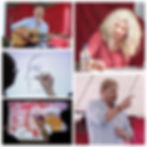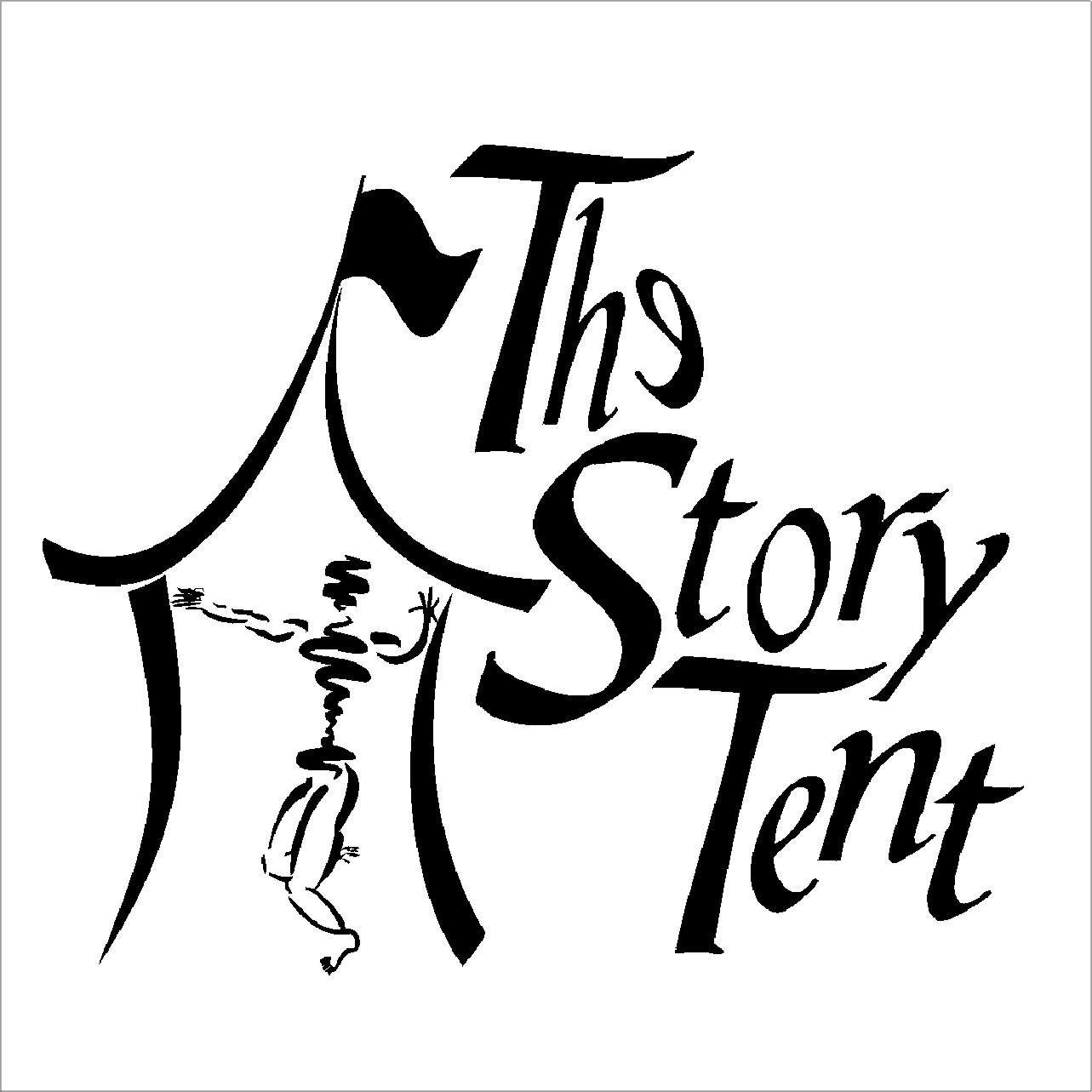FatE 2021 - A Personal Review
- Alastair K Daniel
- Jul 20, 2021
- 7 min read

Before going on to talk about some of the performances that I saw at FatE this year, I need to pay tribute to all those people who made the festival possible. In England, the planned opening up of venues (and relaxation of rules governing socialisation) was moved by the government from 21 June to 19 July. The uncertainty caused by the shift of date led to many festivals being cancelled this year (for understandable reasons), and I will admit to having felt conflicted about the idea of FatE going ahead. However, the organisation of the festival meant that at no point during the weekend did I feel unsafe or nervous about the proximity of other people, or the hygiene of venues. To the untrained eye, the practical aspects of making the festival Covid-safe were exemplary, with social distancing in venues, the wearing of masks, and the regular disinfecting of furniture and equipment. So, a huge congratulations is owed to the organisers, commercial companies, site owners, and volunteers, who came together to create a weekend that was memorable for all the right reasons.

Although the raison d’etre of FatE is to bring people together to hear wonderful performances (and there were many of those this year), the performances were perhaps not the thing for which it was most memorable. Anyone who is involved in the storytelling world will know, only too well, that storytelling moved online during the pandemic (and to a large extent remains there at the time of writing). As devastating as the loss of in-person performance has been, the shift to a virtual world of storytelling has allowed storytellers to connect with audiences all over the world and to work alongside other storytellers with whom they had never shared a physical stage. In addition to being a place where we caught up with people whom we may not have seen for two years, FatE 2021 provided a space where some of those virtual connections could become embodied. Above everything else, it was worth making the journey to Hopton Wafers (Cleobury Mortimer) to be together, and to tell and hear stories in a shared space and time.

It was always going to be inevitable in the Covid-context that this year's FatE would be smaller than the recent festivals. But by locating most of the festival within the Walled Garden at the new site at Hopton Wafers, there was a buzz and it felt busy. Because of travel restrictions, all the tellers came from the British Isles, and they had to work hard with many of them doing several performances to fill the program. Fortunately, the calibre of of most of the artists meant that it wasn't difficult to find something worth going to in the programme, and so here are some of my highlights of FatE 21:
Debs Newbold - King Lear Retold

The most bravura performance of the weekend surely had to be 'King Lear Retold' by Debs Newbold. For an hour and a half, the audience was spellbound as Debs wove an oral narrative from Shakespeare's text: occasionally dipping into the original language, sometimes engaging the audience in conversation, and all the time physicalising both content and meaning. I will freely admit to being squeamish and unable to watch films that are graphic in their portrayal of violence, and sometimes I can find a storytelling performance overwhelming when suffering is described in detail - it is a testament to Debs Newbold’s performance that, with the minimum of physical action and only the most essential of language, she made me curl up in my chair as Gloucester's eyes were plucked, but not to want to run from the marquee. Lear is one of my favourite Shakespeare plays, but I have been to performances where a three-and-a-half hour play has felt like three-and-a-half years. I have also experienced performances which have left me with no sense of the time taken and breathless with emotion at their conclusion. Debs Newbold’s retelling of Lear fits squarely in the second category, and if you have the chance to see it, do. But be warned, it is not always a comfortable ride.
Colin Urwin with Katherine Soutar Caddick - The Mad Man's Window
As well as being a storyteller, I'm an academic with a research interest in storytelling performance. I was intrigued, therefore, by the idea of Colin Urwin’s telling of ‘The Mad Man’s Window’ which was to be live illustrated by Katherine Soutar Caddick. I have previously seen storytelling performances during which someone has illustrated the tales that are being told, but the resulting pictures have always been shared at the end of the story as a response to it, rather than as part of the performance. The Mad Man's Window, however, was a joint performance in which Catherine’s illustration process was projected live onto a screen next to Colin as he unfolded his tales.

Both teller and illustrator came to FatE with established reputations. Colin Irwin is an experienced and well-known teller from Northern Ireland, while Catherine Souter Caddick has illustrated many books including some of those published by the History Press. There was a sense in which the audience was kept guessing by Katharine’s illustrations as they emerged from the blank page. It wasn't clear how each of the two pictures she created linked with the story she was illustrating until a key point in the narrative coincided with the image developing in front of us. At this point, all became clear.
I enjoyed this as a performance piece: both the telling and the illustrating we're accomplished and we were left in no doubt that we were in the presence of very competent practitioners of their respective disciplines. This performance, however, did leave me asking questions, principally, about where I should give my attention. As a storyteller myself, I feel that if the audience is not attentive to the teller, they miss out on the physical cues embedded in the performance: gesture, tension, breath and the manipulation of space. However, as much as I wanted to concentrate on Colin’s telling, allowing my eyes to dart to the picture as it developed at Catherine's hand, the lighting worked against me. In contrast to Colin (who was unlit), both Catherine’s workstation and the projection of her work were bright sources of light (see pictures). As the light failed outside the marquee, Colin started to become a silhouette against these bright lights, making it difficult to give anything but momentary attention to his physicalisation of the story.
In future, I would certainly choose to see similar performances in which art and telling are blended, but I hope that thought would be given to how the attention of the audience is directed. If the art of the teller is equal to that of the illustrator, then there needs to be sufficient light for the audience to create their own balance as they shift their focus between telling and illustrating.
Taffy Thomas and Mossy Christian - The Art of the Tail Coat
The last of my highlights of FatE 2021 is Taffy Thomas’s session The Art of the Tale Coat. As Taffy took us through the commissioning of the coat, the fundraising needed to pay for it, and the artistic process of creating it, he threaded anecdotes and stories, all of which was punctuated by songs and music from Mossy Christian. For those who don’t know, it took two years for textile artist Paddy Killer to design and make Taffy’s tale coat, with illustrations based on the stories that Taffy told. The coat had its premiere in 1999, and has been associated with Taffy's work ever since (though it is not worn all the time).
This Sunday afternoon session was a chance to revisit the making of the coat and some of the stories associated with it. While the stories were (as we would expect) engaging and thought provoking in turn - and I immediately went out and bought the book 'Taffy’s Coat Tales' - the overwhelming memory of the event, and the one which will surely abide with me, is the way in which teller and audience came together to make story, and the affection in which Taffy was held by that audience.

Having highlighted three storytelling sessions from FatE 2021, I want to mention one more moment, and it again involves Mossy Christian. At the end of Saturday, people gathered around a fire pit among the trees to listen to stories from Debs Newbold and music from Mossy Christian. Now, I come from a folky background and am used to these kind of events, but when he started to accompany himself singing Over the Hills and Far Away (John Tams’ theme song for the TV series ‘Sharpe’), and half the audience gently added their own voices to his, I found myself utterly caught by the specialness of the occasion, the location and the people at this wonderful weekend.
Some thoughts to consider (even better if...)
I have been unremittingly positive about FatE 21 in everything that I have written above, but that is an honest assessment of the festival as I experienced it. However, there are always things that are not quite right, and there were a few occasions when I was uncomfortable about the way that tellers approached their performances (particularly in relation to social justice).
My day job is in university teacher education, and one of the bug-bears of my geography colleagues is the treatment of Africa as having a single cultural identity. Although I am not a geographer, I was disappointed with the way that a west African tale was contextualised within a generalised ‘African culture’, complete with references to people in ‘loincloths’. Such a lack of criticality was also evident when one teller said, ‘Well, you know what women are like’, and followed it up with a gendered point about the wearing of perfume. Of course, it would be possible to say such things in an ironic way that demonstrates the absurdity of such statements, but sadly there was no ironic intention here (as evidenced by further comments later in the set). I am not saying that tellers should be cancelled because their views (or at least the way they express them) are not sufficiently PC, but I am disappointed that we still have to have these kinds of conversations in 2021.
The FatE programme was helpfully labelled with age appropriateness guides, differentiating between performances that were family-friendly and those which had adult themes (or were complex). I was, therefore, disappointed to attend a supposedly family-friendly session in which the teller made repeated references to adult themes. It could be argued that children would not understand such adult references (including double-entendre), but this would mean that the children were intentionally excluded from sections of the performance. I am all for storytelling performances that work on multiple levels, but this is not the same as relying on jokes that only work behind the backs of the children present.
Finally
Festivals are the result of a lot of hard work from a large group of people. I can't imagine the stresses and strains of having to organise last weekend's events in the current circumstances, and it is a tribute to everyone involved that FatE happened at all. But FatE didn’t just happen; despite masks, social distancing and disinfection routines, I sensed that everyone present experienced an uplifting and affirming reminder of the power that storytelling has to celebrate oral culture and to bring people together. So, here’s looking forward to FatE 2022.






